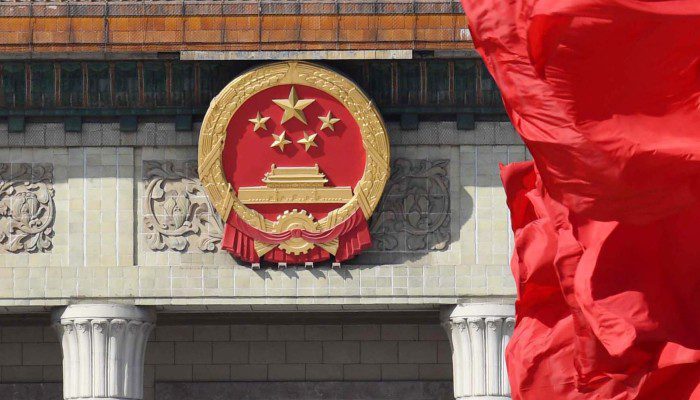China technology growth spurs tax deductions and incentives for expats working in R&D field.
Opening a Research and Development Center (R&D Center) in China is set to become a solid investment. As a matter of facts, the Chinese Government is subsidizing foreign-established R&D Centers (including Macau, Hong Kong, and Taiwan) with different measures and tax deductions. Aiming at further opening-up and supporting cross-border flows of innovative elements, the P.R.C. government will reward your investment in research and development (if you comply with the standards).
In this article, S.J. Grand offers an overview of the most recent regulations in terms of both taxation and work and residence permits.
Regulation and Numbers of Research and Development Centers in Shanghai
The Shanghai Municipal People’s Government promulgated several opinions to encourage the development of foreign-funded R&D Centers. Indeed, with the Hu Fu Ban Fa [2015] No. 42 [沪府办发(2015) 42号], Authorities are supporting foreign funds investing into R&D in Shanghai up to October 31st, 2020.
The Government’s plan includes the transformation of Shanghai Municipality, in particular, Pudong Area (Zhangjiang and Lingang), into a cluster of science and technology innovative resources. Pudong is actually shifting from being a high-intensive manufacturing hub, into a district focused on innovation, technology, and science. The main goal is to boost the growth in technology to transform production in some areas of the country (starting from the coast).
According to Shanghai Daily, Pudong area now counts 554 R&D centers (of which 220 were founded by multinationals). This number is forecasted to increase to 600 in the next three years.
Defining foreign-funded R&D center
According to Chinese law, foreign-funded research and development centers indicate organizations established by foreign investors, specialized in research and experimental development (including intermediate testing that serves R&D activities) in the fields of relevant technologies and natural sciences for example.
The main activities of the centers should include:
- Basic research;
- Applied research; and
- Product development.
An R&D center can be established in the legal form of:
- Independent legal person;
- Equity or cooperative joint venture;
- Wholly-foreign owned enterprise;
- Independent research and development department or branch of a legal person established within a foreign-invested enterprise.
Shanghai Municipality encourages research and development centers to cooperate with the Municipality’s projects in order to exchange knowledge, trade high-tech achievements, and grow China’s technology level. In addition, foreign-funded centers are supported to register trademarks and patents in China to strengthen intellectual rights protection.
Limitations to open a foreign-funded R&D Center in China
The best idea would be to register for high and new technology industrial development zones. But, the investment for the Research and Development Center should not be over the threshold of USD 2 million. Also, employees with bachelor’s degree should be directly engaged in R&D activities. They should count at least for 80% of the total staff.
Tax Advantages for Foreigners opening Research and Development Centers in China
There are tax advantages to reduce foreign-funded R&D centers’ costs, as well as to support their establishment in the Municipality of Shanghai.
Tax incentives include:
- Super deduction for R&D expenses:
-
- Small and Medium Enterprises (SMEs) can enjoy 175% super deduction on Corporate Income Tax (CIT) for eligible R&D expenses;
- Other qualified companies can enjoy 150% super deduction on CIT for eligible R&D expenses;
- Application for a tax refund; and
- Tax exemption for buying imported equipment: the exemption includes import customs duties, import-linked VAT and consumption tax. The VAT should be fully refunded for the procured equipment that is manufactured domestically.
Companies should satisfy the regulatory requirements on R&D management, expense tracking, industry catalog, etc. to obtain the R&D expense super deduction.
Moreover, imports addressed to research and development activities should have the priority when inspected at the Chinese customs.
Visa Application Options for Foreign Staff in R&D
Encouraging young talents working in R&D fields
A positive social aim of the R&D Centers’ development is to employ and nurture young talents, especially post-graduates, in research fields. Foreign-funded research and development centers should establish laboratories and talent training bases jointly with the Municipality’s tertiary institutions, research institutes, and enterprises. Post-doctoral researchers will also be actively recruited.
Non-Chinese staff working for foreign-funded research and development centers who need to travel inside and outside China may apply for a multiple entry Visa with a validity period not exceeding one year and a duration of stay not exceeding 180 days.
The application for a talent visa and, consequently, for the China residence permit may be submitted by:
- Foreign high-level talents employed by foreign-funded research and development centers who are accredited by the Shanghai Municipal talent administration authorities; and
- Senior professionals employed by organizations listed in Shanghai’s technology innovation job list.
Senior level staff in R&D Centers in China
Senior level staff, as well as other expatriates’ categories, may apply to get an extension on their residential permit validity.
The following table helps understanding how different extension terms apply to diverse categories of expatriates:
| Expatriates in China | Residence Permit Validity |
| Legal Representative, General Manager, Deputy General Manager, Chief Financial Officer (CFO) | 5 years |
| Department Managers and Researchers | 4 years |
| General expats employees | 3 years |
| Expatriate staff who applied for an employment-type residential permit in Shanghai Municipality twice consecutively and do not have any record of an illegal act or breach of law | 5 years |
Permanent Residence Permit (or “China Green Card”) for foreigners in the R&D field
Obtaining China’s green card becomes easier than before for foreigners working in foreign-funded R&D centers. The application criteria have been relaxed over time.
In fact, the regulation in Shanghai Municipality establishes that expatriate staff, upon recommendation from their employer, may apply for a permanent residence permit in China. To apply for it, expatriates must meet the following requirements:
- Having worked for four years consecutively in Shanghai (and no less than six months every year),
- Owning a stable livelihood and address, and
- Annual income and annual individual income tax payment attaining the stipulated standards.
Foreigners working in foreign-funded research & development centers, who hold a deputy senior title (i.e. associate professor or deputy researcher) and have been employed for four years consecutively (which means to stay in China for not less than three years cumulatively during the four-year period) and have good tax payment records, can also apply for a permanent residential permit in China.
The Chinese Government and Shanghai Municipality aim at attracting foreign capital to invest in R&D fields. Opportunities for foreign firms operating in technology, biomedical, chemical, research industries among others, are increasing in China. The new measures also include easier access to services and less processing time for the issuance of work and residence permits.
Before planning an investment in the P.R.C., in any case, we strongly suggest seeking professional advice: regulations quickly change.
To better understand procedures and tax incentives, do not hesitate to contact our Team at S.J. Grand.







